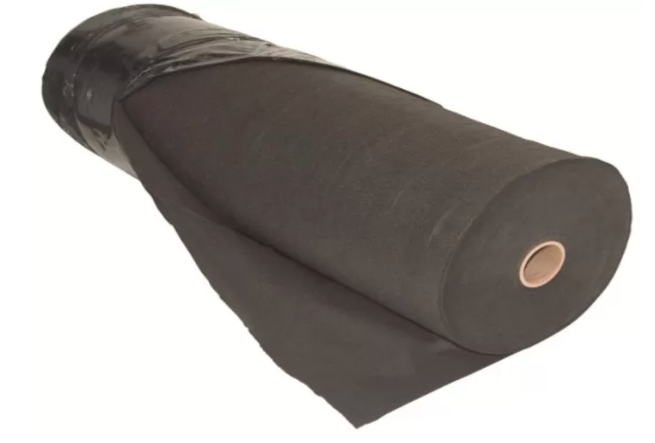- Understanding the Role of Geomembrane Liners in Waste Management
- Innovations in Geomembrane Liners for Water Management
- Geomembrane Liners: A Comprehensive Guide
- The Future of Geomembrane Liners in Civil Engineering
- Geomembrane Liners: Enhancing Landfill Stability
Manager:
WhatsApp:+86 177 0135 2670
Tel:+86 177 0135 2670
Email:marketing@okorder.com
Address:3rd Floor, No.2 Building, No.1 Sanlihe Road
The Unseen Heroes: The Journey and Impact of Filter Fabric Geotextiles
In the vast landscape of construction and environmental management, there is a silent hero who is often forgotten but always present. This hero is filter fabric geotextile which plays a pivotal role in infrastructural stability and longevity. From the depths of ancient Egyptian roadways to the modern marvels of today, filter fabric Geotextiles have been unsung warriors providing strength, stability, and a barrier against the elements. Let’s go on a journey to unravel intricacies, applications and profound impacts made by these outstanding materials.
The Essence of Filter Fabric Geotextiles
Filter fabric geotextiles are more than mere fabrics; they are lifeblood for most construction projects. These permeable materials usually made from synthetic fibers such as polyester or polypropylene allow water to pass through while stopping soil particles migration. Their dual functionality also makes them ideal for various uses including drainage systems, road construction or even landscaping and environment protection.

A Historical Perspective: From Ancient Egypt to Modern Times
The history of filter fabric geotextile goes back to the beginning of civilization itself. Originally called filter fabrics, these were used in road constructions during pharaoh times in order to provide stability and strength. Fast forward to our days and you will find out that most new construction projects incorporate geotextiles into them in roads, railways harbors works, drains breakwaters or hillside erosion control applications.
The Spectrum of Geotextile Fabrics: Woven And Non-Woven
The world of geotextiles is diverse but complex at the same time. For example woven geotextiles having high tensile strength are good for use in road construction as well as erosion control (Nathan et al., 2014). Basically matting together strands they look like plastic sheets if observed closely enough (Zornberg et al., 2005). On the contrary, non-woven geotextiles are produced by entangling both long and short fibers using such techniques as needle punching or thermal bonding (Rawal et al., 2017). These fabrics are commonly used in drainage applications, separation, filtration and protection.
Applications: A Tapestry of Uses
Filter fabric geotextiles are used across different application areas that each have unique requirements for the material. For example in drainage systems they stop soil erosion while allowing water to pass through thus maintaining soil stability and preventing waterlogging. In road construction they function as filters and separators leading to enhancement of performance and durability of a road. In landscaping projects therefore filter fabric geotextiles help control erosions on soils and enhance stabilities to promote healthy plant growth.
In erosion control applications, filter fabric geotextiles stabilize soil on slopes, embankments, and shorelines by preventing soil displacement while allowing water to drain through. They are also utilized in environmental protection efforts like landfill liners, sediment control measures and shoreline protections that prevent soil contamination, manage sediment run-off as well as controlling erosion. In wastewater treatment plants these items serve as separation media for liquids from solids hence aid in purification process.
The Design Approach: A Systematic Journey
Designing with Geotextile Filters must be done systematically to ensure that it meets the requirements of an application where it is intended to be used (Richardson et al., 2006). This includes defining boundary conditions i.e., permeability needs as well anti-clogging requirements for any given filtering technique. The process however requires meticulousness which indicates the significance of every step towards achieving what is desired at the end.
The Future We Weave
Moving forward into the future, filter fabric geotextiles have a more promising role. These fabrics will always be important in shaping the world through sustainable construction practices as well as the development of strong infrastructure. Currently, effort has been directed at improving their mechanical properties and environmental performance through research and development, which further enhances their capabilities and extends areas of application.
To sum up, filter fabric geotextiles are more than just materials; they work invisibly during construction or environmental projects. The fact that these materials can be used for filtration purposes, separating different types of soil, enforcing other structures while being adaptable to multiple uses is what makes them critical. Despite ongoing inventions of new applications for such textiles, filter fabric geotextile will endure as a fundamental aspect of contemporary engineering and environmental stewardship.
The future is crafted around today’s strands and filter fabric geotextiles are one component that completes the picture. As we keep our eyes on tomorrow, let us not forget to acknowledge how far these fabrics contribute towards forming a stronger, stable and sustainable world. Theirs is not only a utility story but also an example of human cleverness in wanting to make tomorrow even better every day.
- Previous:The Essence of Non-Woven Geotextiles
- Next:The Loyal Partner: Driveway Geotextile Fabric in Our Infrastructure






